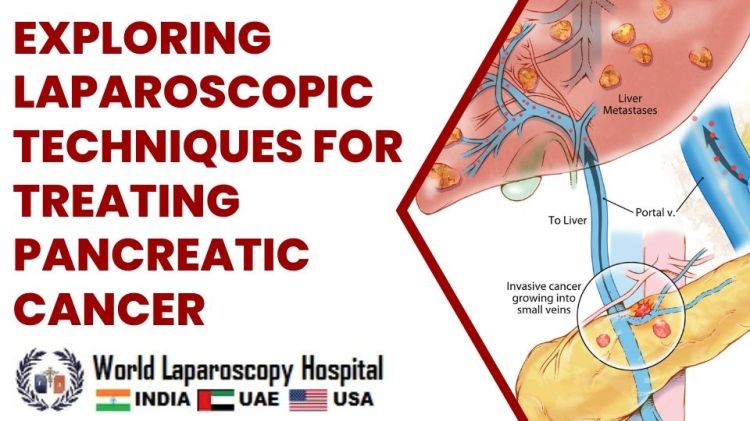Exploring Laparoscopic Techniques for Treating Pancreatic Cancer
Introduction
Pancreatic cancer remains a formidable adversary in the realm of oncology, presenting unique challenges due to its aggressive nature and limited treatment options. In recent years, there has been a growing interest in exploring innovative surgical approaches to address this formidable disease. One such avenue of exploration that has gained significant traction is the use of laparoscopic techniques for treating pancreatic cancer. This article aims to provide a comprehensive overview of the current landscape, challenges, and promising advancements in laparoscopic procedures for pancreatic cancer treatment.

Understanding Pancreatic Cancer
Before delving into laparoscopic techniques, it is crucial to grasp the intricacies of pancreatic cancer. Known for its insidious nature, pancreatic cancer often goes undetected until advanced stages, contributing to its notoriously low survival rates. The pancreas, located deep within the abdomen, poses challenges for both diagnosis and treatment. Surgical intervention, traditionally considered the primary curative option, has historically been associated with high morbidity rates.
Challenges in Pancreatic Cancer Surgery
Anatomy Complexity:
The anatomical complexity of the pancreas, nestled behind other vital organs, makes surgical access challenging. Traditional open surgeries necessitate large incisions, leading to prolonged recovery times and increased risks of complications.
Late-stage Diagnosis:
Pancreatic cancer is frequently diagnosed in its later stages, limiting the feasibility of curative surgical interventions. Late-stage presentations often involve tumor invasion into surrounding structures, making complete resection more intricate.
Postoperative Complications:
Conventional pancreatic surgeries are associated with a range of postoperative complications, including pancreatic fistulas, infections, and delayed gastric emptying. These complications contribute to extended hospital stays and impact patients' overall quality of life.
Laparoscopic Techniques: A Paradigm Shift
Laparoscopic surgery, also known as minimally invasive surgery, has emerged as a transformative approach in various surgical disciplines. The fundamental principle involves performing surgeries through small incisions using a laparoscope, a thin tube with a camera and light source. In recent years, the application of laparoscopic techniques to pancreatic cancer surgery has garnered attention for its potential to mitigate the challenges associated with traditional open procedures.
-
Advantages of Laparoscopic Surgery:
- Reduced Blood Loss: Laparoscopic procedures typically involve minimal blood loss, mitigating the need for transfusions and reducing the overall surgical risk.
- Faster Recovery: Smaller incisions lead to quicker recovery times, shorter hospital stays, and faster return to normal activities.
- Cosmetic Benefits: The cosmetic impact of smaller incisions is not to be overlooked, offering improved aesthetic outcomes compared to large open incisions.
-
Specific Laparoscopic Procedures for Pancreatic Cancer:
- Laparoscopic Distal Pancreatectomy: This procedure involves the removal of the distal part of the pancreas. Studies have shown comparable oncological outcomes to open surgery with the added benefits of reduced morbidity.
- Laparoscopic Whipple Procedure: The Whipple procedure, a complex surgery involving the removal of the head of the pancreas, the duodenum, and other surrounding structures, has been successfully adapted to laparoscopic techniques in selected cases.
-
Navigating Anatomical Challenges:
- Advanced Imaging Techniques: Laparoscopic surgery relies heavily on advanced imaging techniques such as high-resolution laparoscopes and intraoperative ultrasound. These technologies enhance visualization, aiding surgeons in navigating the intricate anatomy of the pancreas.
-
Ongoing Research and Innovations:
- Robot-Assisted Laparoscopy: The integration of robotic systems in laparoscopic procedures is an evolving frontier. Robotic assistance provides enhanced dexterity and precision, potentially overcoming some of the challenges posed by traditional laparoscopy.
Challenges and Considerations
While laparoscopic techniques hold immense promise, certain challenges and considerations warrant careful examination:
-
Tumor Size and Location:
- Larger tumors and those located in challenging anatomical positions may pose difficulties for laparoscopic resection. Patient selection is crucial to ensure the feasibility and safety of laparoscopic interventions.
-
Long-term Oncological Outcomes:
- Long-term studies comparing the oncological outcomes of laparoscopic versus open surgeries are essential to establish the efficacy and safety of laparoscopic techniques in the context of pancreatic cancer.
-
Surgeon Expertise:
- Laparoscopic pancreatic surgery requires specialized skills. Surgeon expertise and experience play a pivotal role in determining the success of these procedures. Training programs and ongoing education are vital for ensuring a skilled cadre of laparoscopic pancreatic surgeons.
-
Cost Considerations:
- The initial costs associated with laparoscopic procedures, including equipment and training, may be higher. However, the potential reduction in postoperative complications and hospital stays may offset these initial expenses.
Conclusion
The exploration of laparoscopic techniques for treating pancreatic cancer represents a paradigm shift in the approach to a disease that has long posed significant challenges to the medical community. While the field is still evolving, the promising outcomes of laparoscopic procedures, including reduced morbidity, faster recovery, and improved cosmetic results, suggest a positive trajectory.
Continued research, technological advancements, and the refinement of surgical techniques are essential for further establishing laparoscopic surgery as a viable option in the comprehensive treatment of pancreatic cancer. As the medical community continues to push the boundaries of innovation, the integration of laparoscopic techniques may contribute significantly to improving patient outcomes and redefining the landscape of pancreatic cancer care.
